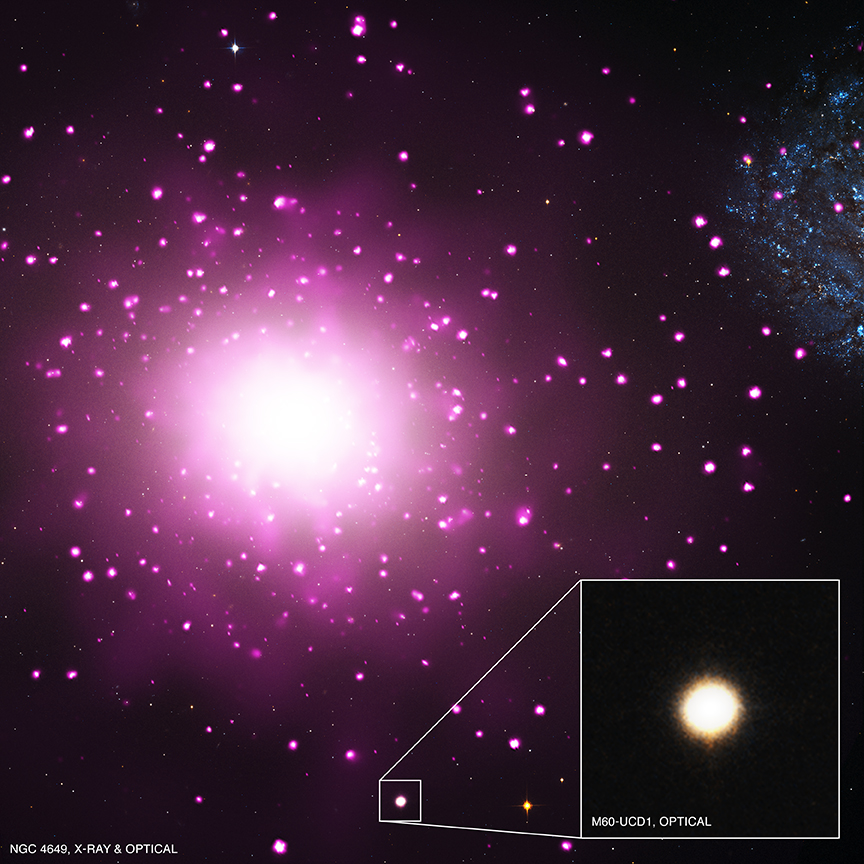
 Credit: X-ray: NASA/CXC/MSU/J.Strader et al, Optical: NASA/STScI
Credit: X-ray: NASA/CXC/MSU/J.Strader et al, Optical: NASA/STScI
The Dense Dwarf
Astronomers have identified what they believe is the densest galaxy in the known Universe. It's known as M60-UCD1, and is shown above in a composite X-ray image (from the Chandra X-ray Observatory) and an optical image (from the Hubble Space Telescope). M60-UCD1 has a mass equivalent to 200 million solar-type stars, comparable to the mass of our own Milky Way galaxy, but about half of this mass is found within a radius of only about 80 light years. This means that the density of stars in M60-UCD1 is about 15,000 times greater than the density in the Sun's neighborhood, so that stars in M60-UCD1 are about 25 times closer on average than they are in the solar neighborhood. Imagine the impressive spectacle of the night sky, flush with stars, seen by a denizen of a planet in M60-UCD1. Astronomers are trying to unravel the puzzle of the origin of M60-UCD1: did it happen to be born with this exceptionally high stellar density, or did some cataclysmic galactic collision play a role? It's even possible that galactic collisions may have stripped stars from M60-UCD1, meaning that in the distant past this dwarf could have been even more massive.
Published: October 14, 2013
<
HEA Dictionary ● Archive
● Search HEAPOW
● Other Languages
● HEAPOW on Facebook
● Download all Images
● Education ● HEAD
>

Each week the HEASARC
brings you new, exciting and beautiful images from X-ray and Gamma ray
astronomy. Check back each week and be sure to check out the HEAPOW archive!
Page Author: Dr. Michael F. Corcoran
Last modified Tuesday, 27-Feb-2024 10:06:45 EST


